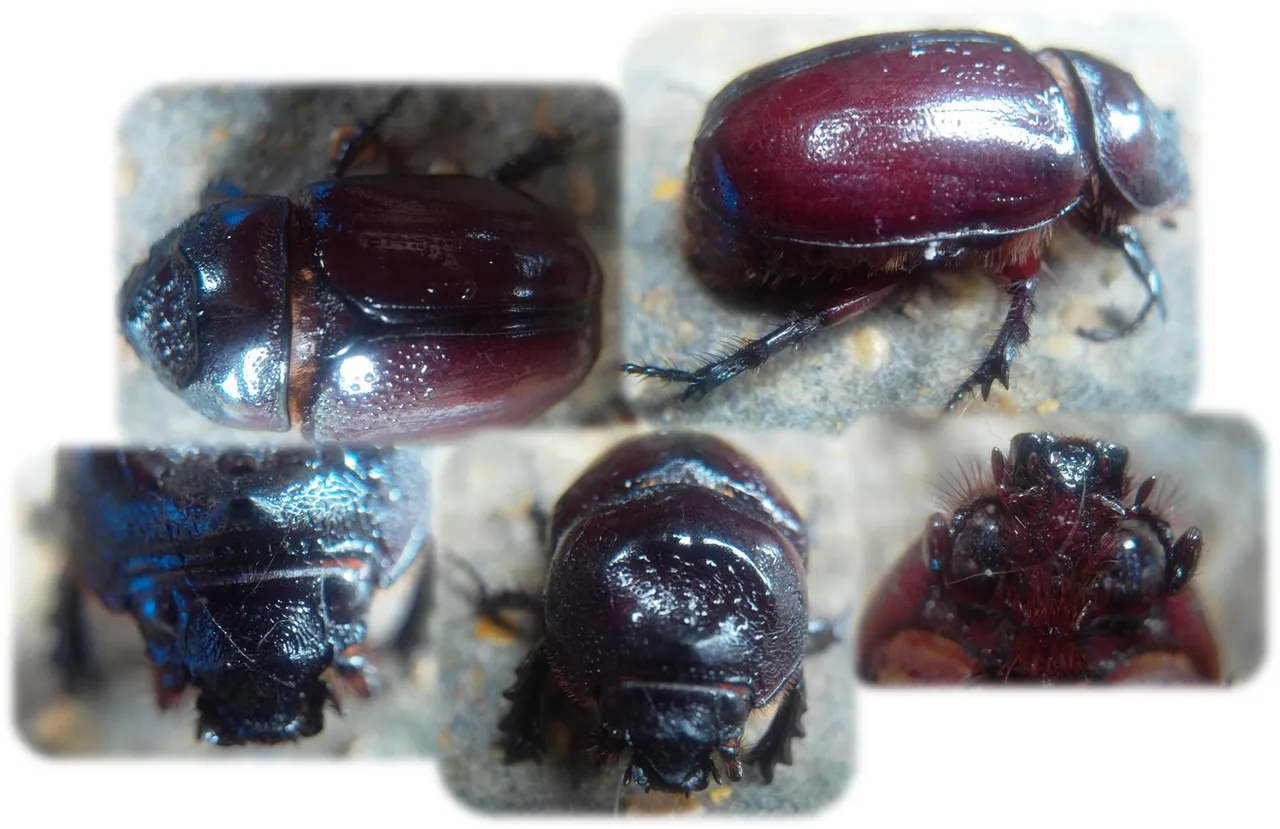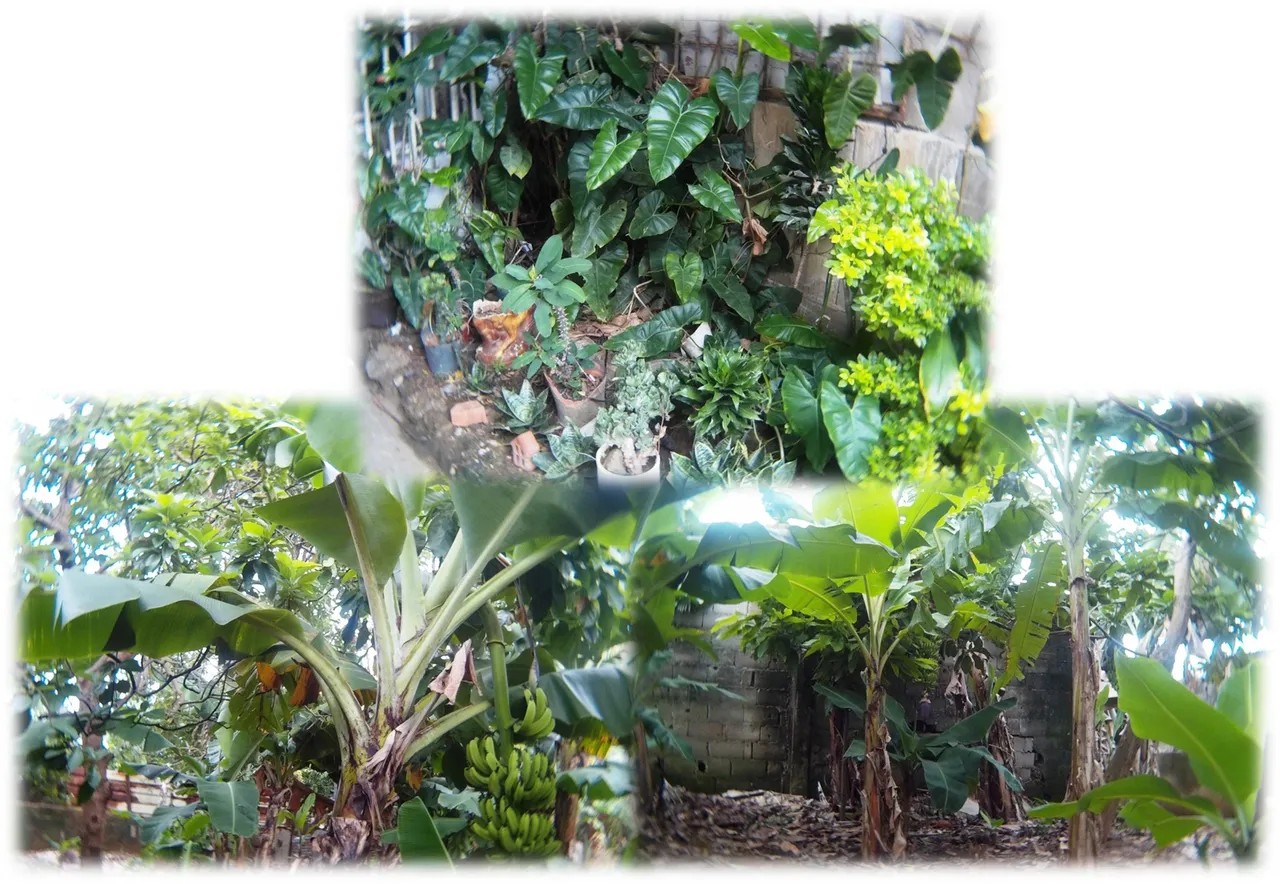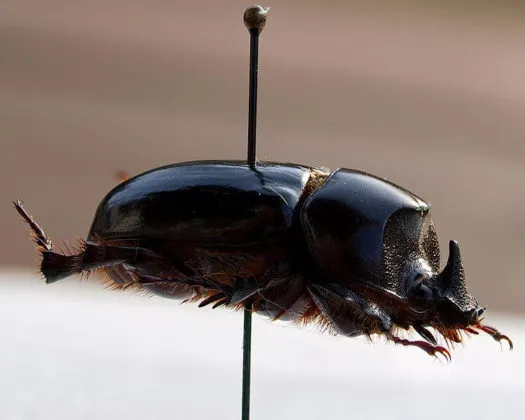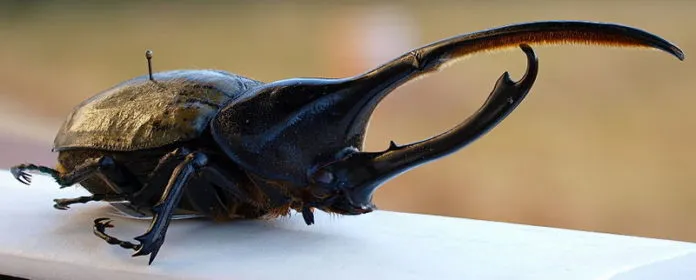Hola amigos de hive. Y un especial saludo a la comunidad Fascinating Insects, soy nueva en esta plataforma y me gustaría incursionar en todas las áreas posibles, para asi poder compartir un poco con tod@s. Como mi primera publicación para la comunidad les traigo a una pequeña pero resistente criatura, le hablo del escarabajo rinoceronte; se preguntaran porque me llama la atención este insecto, pues les cuento.
Hello hive friends. And a special greeting to the Fascinating Insects community, I am new to this platform and I would like to venture into all possible areas, so that I can share a little with everyone. As my first community post I bring you a small but tough creature, I tell you about the rhinoceros beetle; they will wonder why this insect catches my attention, well I tell them.


Esta maravillosa criatura tiene un lugar especial en nuestra familia, ya que comúnmente no se encuentran en la ciudad donde vivo debido a diversos factores (contaminación, deforestación, etc). Pero gracias a que en mi familia somos amantes de la naturaleza, tenemos un patio que parece una selva tropical jejeje, un habitad perfecto para este impresionante insecto.
This wonderful creature has a special place in our family, since they are not commonly found in the city where I live due to various factors (pollution, deforestation, etc.). But thanks to the fact that in my family we are nature lovers, we have a patio that looks like a tropical jungle hahaha, a perfect habitat for this impressive insect.


Por ello, la visita constante del escarabajo rinoceronte a nuestro hogar es algo normal.
Therefore, the constant visit of the rhinoceros beetle to our home is something normal.


Escarabajo rinoceronte es el nombre común que reciben las especies que forman parte de la subfamilia Dynastinae. Los insectos que conforman este grupo se caracterizan por su gran tamaño y su apariencia física, donde destacan los grandes cuernos.
Estos coleópteros se encuentran distribuidos en todo el mundo, excepto en las zonas polares. En cuanto a su hábitat, prefieren los bosques tropicales húmedos y los bosques maduros.
En dichos ecosistemas, el escarabajo rinoceronte vive entre los tallos y las hojas descompuestas, de los cuales se alimenta. Además, el adulto suele comer frutas, hojas y raíces.
Rhinoceros beetle is the common name for species that are part of the Dynastinae subfamily. The insects that make up this group are characterized by their large size and physical appearance, where the large horns stand out.
These coleopterans are distributed throughout the world, except in the polar areas. Regarding their habitat, they prefer humid tropical forests and mature forests.
In such ecosystems, the rhinoceros beetle lives among decayed stems and leaves, on which it feeds. In addition, the adult usually eats fruits, leaves and roots.


El cuerpo del escarabajo rinoceronte adulto se encuentra cubierto por un grueso exoesqueleto. Además, posee un par de alas gruesas, conocidas como élitros. Debajo de estas, tiene otras alas, de tipo membranoso. Estas permiten que el coleóptero vuele, aunque no lo hace de manera eficiente debido a su gran tamaño.
The body of the adult rhinoceros beetle is covered by a thick exoskeleton. In addition, it has a pair of thick wings, known as elytra. Below these, it has other wings, of the membranous type. These allow the beetle to fly, although it does not do so efficiently due to its large size.

Xyloryctes jamaicensis. Fuente: JohnSka, CC BY-SA 3.0 https://creativecommons.org/licenses/by-sa/3.0, via Wikimedia Commons

Los cuernos del escarabajo rinoceronte se proyectan como crecimientos cuticulares rígidos. Estos nacen desde el protórax y/o de la cabeza. En cuanto a su desarrollo, ocurre a partir del tejido epidérmico de las larvas, que posteriormente prolifera, formando un disco.
El tamaño y la forma del cuerno del macho es variable. Así, el escarabajo rinoceronte posee dos cuernos, un torácico y otro cefálico, que se asemejan a unas pinzas.
The horns of the rhinoceros beetle project as rigid cuticular growths. These are born from the prothorax and / or the head. Regarding its development, it occurs from the epidermal tissue of the larvae, which later proliferates, forming a disk.
The size and shape of the male's horn is variable. Thus, the rhinoceros beetle has two horns, one thoracic and the other cephalic, which resemble claws.

Dynastes hercules. Fuente: JohnSka, CC BY-SA 3.0 https://creativecommons.org/licenses/by-sa/3.0, via Wikimedia Commons

Algunas de las poblaciones del escarabajo rinoceronte se encuentran amenazadas de extinguirse. Tal es el caso del Calicnemis latreillei, que ha sido categorizado por la UICN como una especie en riesgo de desaparecer de su hábitat natural.
Some of the rhinoceros beetle populations are threatened with extinction. Such is the case of Calicnemis latreillei, which has been categorized by the IUCN as a species at risk of disappearing from its natural habitat.

Dicho coleóptero habita en Argelia, Francia, Italia y España. En dichas regiones, el ambiente se encuentra degradado, debido a la tala y deforestación de los bosques. Además, los terrenos forestales son utilizados para construir elementos urbanísticos y estructuras turísticas.
This beetle lives in Algeria, France, Italy and Spain. In these regions, the environment is degraded, due to logging and deforestation of the forests. In addition, the forest lands are used to build urban elements and tourist structures.

Los bosques lluviosos donde habitan están fragmentados y degradados, por la acción del cambio climático y por la deforestación. Además, un gran número de especies de la subfamilia Dynastinae son capturadas, para ser vendidas a nivel internacional como mascotas.
Dichos factores afectan las comunidades de este insecto, pudiendo repercutir negativamente en su desarrollo.
The rainforests where they live are fragmented and degraded, due to the action of climate change and deforestation. In addition, a large number of species of the Dynastinae subfamily are captured, to be sold internationally as pets.
These factors affect the communities of this insect, and may have a negative impact on its development.

Información tomada de:
https://www.lifeder.com/escarabajo-rinoceronte/
Information taken from:
https://www.lifeder.com/escarabajo-rinoceronte/

Hasta la próxima oportunidad, espero saber de ustedes y acepto cualquier recomendación que me ayude a crecer en esta plataforma.
Until next time, I hope to hear from you and I accept any recommendation that helps me grow on this platform.


Copyright @sinairolarosa. All rights reserved.
